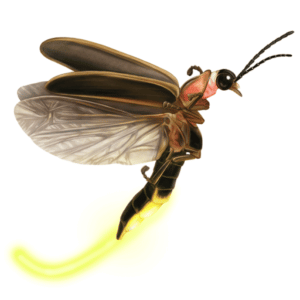Notice: Below is a list of 0 important links included on this page.
Please note that while screen readers have made significant strides, they may still lack full support for optimal web accessibility.

You must be logged in to post a comment.
This is a project of the Xerces Society, working in collaboration with the IUCN SSC Firefly Specialist Group and New Mexico BioPark Society.
Copyright © 2025 The Xerces Society •1631 NE Broadway Street, #821 • Portland OR 97232 USA
Based on the early evening display time, the urban/suburban setting, and the low display height, I am tentatively identifying this as big dipper (Photinus pyralis), which is the dominant species of flashing firefly in the Chicago area.
Did the fireflies dip and then rise up as they were flashing (creating a J-shape)? That, along with photos of the fireflies in hand, would help to confirm.